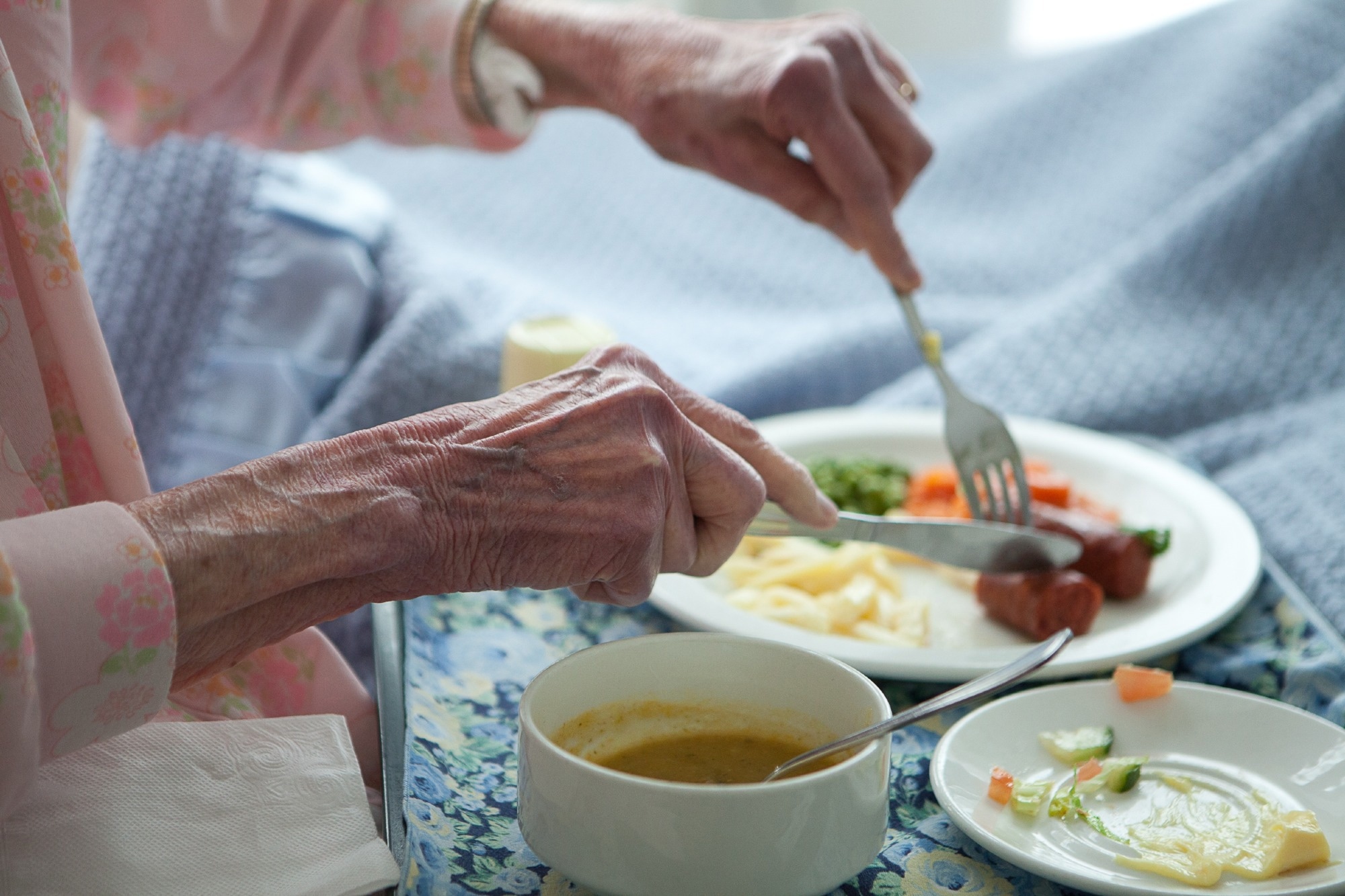In a recent editorial published in Nutrients, researchers described the influence of nutrition on osteoarthritis (OA).
 Study: The Role of Nutrition in Osteoarthritis Development. Image Credit: Lizelle Lotter/Shutterstock.com
Study: The Role of Nutrition in Osteoarthritis Development. Image Credit: Lizelle Lotter/Shutterstock.com
Background
OA, a degenerative-type joint disorder, has significantly increased globally since 1990. With increased individual age and obesity prevalence, OA cases are expected to rise further.
OA patients suffer from chronic pain and joint stiffness. OA is a significant economic burden on patients and society. The United States Food and Drug Administration (US FDA) has labeled it a serious disease.
To study new intervention strategies, increasing scientific knowledge of the protective mechanisms of nutritional supplementation against OA is crucial. This will shed light on nutrition's relationship with OA pathogenesis and potentially lead to new dietary manipulation-based therapy.
About the editorial
In the present editorial, researchers present the dietary regulation of OA.
Targeting obesity and the gut to manage OA
OA is a complex condition influenced by obesity, age, inflammation, mechanical loading, joint damage, and genetics. However, the exact mechanisms behind its development are not fully understood, and no treatments are currently available to retard OA progression or restore cartilage.
Current pharmacological management focuses on pain control, while non-pharmacological measures are based on physical activity and weight loss. In advanced cases, surgical intervention may be considered. Recently, scientific interest has increased in the nutritional modification of osteoarthritis risks and pathology.
Obesity is a significant risk factor for osteoarthritis, as it alters joint biomechanics and releases inflammatory factors. Studies have reported correlations between joint inflammation and elevated n-6/n-3 fatty acid ratio. Increased n-6 fatty acid intake has been associated with synovial inflammation and cartilage deterioration among obese individuals.
On the contrary, diets abundant in omega-3 fatty acids lower pain and inflammation, with improved joint function among OA patients. Therefore, modifying diets by enhancing omega-3 fatty acid consumption could be a novel OA prevention and treatment approach.
Obesity-related osteoarthritis can be managed by restoring the gut microbial balance of beneficial and pathogenic microorganisms. Oligofructose, a prebiotic supplement, can manipulate particular intestinal microbes to treat obesity-related dysbiosis, reduce generalized inflammation, and prevent loss of cartilage in obese mice.
Gut microbial manipulation can also treat OA related to medial meniscus destabilization. The administration of a probiotic combination following fecal microbial transplantation could prevent medial meniscus destabilization-induced cartilage injury and positively impact subchondral bone structure, especially the condylar region of the femoral bone. This indicates a novel approach to treating obesity-associated OA.
Role of vitamins and antioxidants in OA management
Vitamin D is crucial for strong muscles, teeth, and bones and increases intestinal phosphorus and calcium absorption. Hydroxylation processes in the kidney and liver form the activated vitamin D, 1,25-dihydroxy vitamin D [1,25(OH)2D].
Vitamin D binds to vitamin D receptors (VDRs), which triggers gene transcription, impacting phosphorus and calcium transport. Studies have shown that VDR knockout murine animals lack the osteoarthritis phenotype despite osteomalacia and rickets appearing after the initial life month.
Vitamin D receptors have been detected within the articular cartilages of individuals with osteoarthritis but not among healthy individuals.
Although there is no evidence activated vitamin D can improve radiologic osteoarthritis or prevent loss of cartilage volume among individuals with vitamin D adequacy, randomized controlled trials indicate that supplementation may reduce pain and probably improve radiologic osteoarthritis among individuals with vitamin D deficiency.
Vitamin K, the fat-soluble molecule found in leafy greens, fermented, and animal-origin foods, serves as a cofactor for the gamma-glutamyl carboxylase enzyme that forms the gamma-carboxyglutamate (Gla) component of proteins that influence blood coagulation and bone calcification.
Matrix Gla proteins (MGPs) are expressed on chondrocytes and are involved in calcification. MGP polymorphisms have been linked to radiographic hand osteoarthritis, and vitamin K deficiency could hinder the differentiation of chondrocytes and prevent the formation of endochondral bone.
Vitamin K has demonstrated OA prevention potential in a cross-sectional, prospective cohort, and case-control studies. Vitamin K supplementation has prevented joint space narrowing among individuals with vitamin K insufficiency. However, further research is required to explore Vitamin K’s effects on osteoarthritis symptoms.
Studies have reported that antioxidants such as vitamins E and C and curcumin can improve osteoarthritis symptoms by counteracting oxidative stress. While dietary supplementation and intraarticular Vitamin C injections can reduce osteoarthritis symptoms, studies have reported that excessive amounts of the vitamin may cause detrimental effects.
The anti-inflammatory and antioxidant properties of Vitamin E could potentially improve OA management. However, data on the association between joint health and vitamin E is controversial.
Recent studies have shown that curcumin effectively improves knee osteoarthritis symptoms, with improved tolerability and comparable efficacy to non-steroidal-type anti-inflammatory drugs (NSAIDs).
Trace elements like copper, selenium, and boron can prevent osteoarthritis due to antioxidant and anti-inflammatory properties, whereas iron and cadmium may aggravate osteoarthritis development and progression.
Overall, the editorial findings highlighted the nutritional management of OA. The data could inform therapeutic strategies to lower disease burden and improve the standard of care for OA patients.